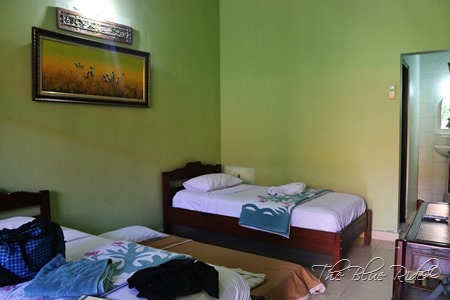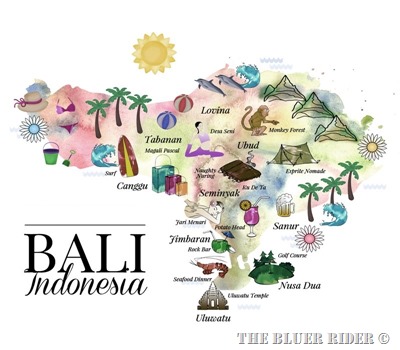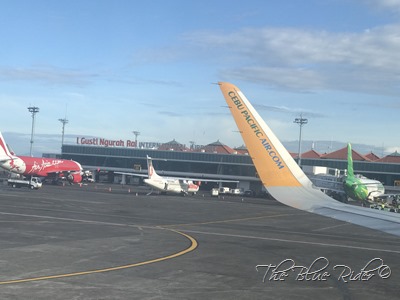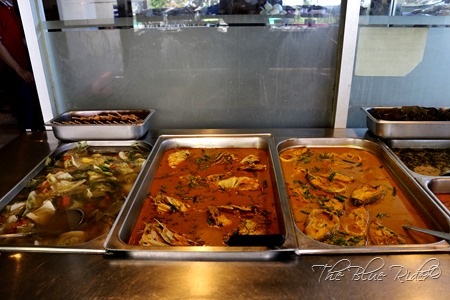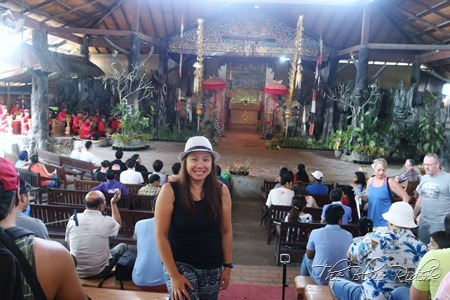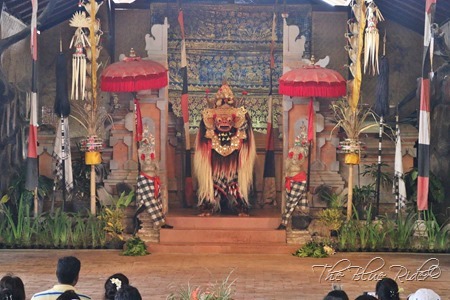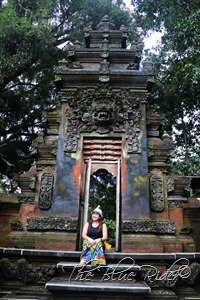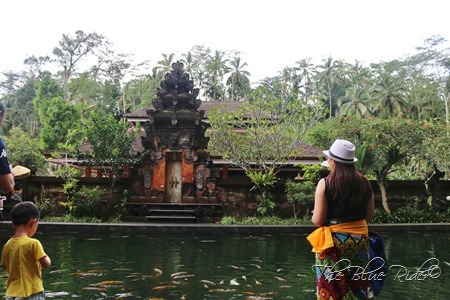Travelers in Bali often seek its iridescent green rice terraces and beaches, but there is another way to explore the island: templehopping. That’s what I came here for.
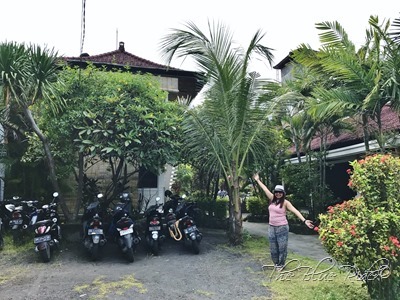
Bali is home to thousands of Hindu temples with charming courtyards and intricate designs. More than 80 per cent of the locals are Hindu. For the curious traveller, templehopping can be a delightful eyeopener. After all, each temple or pura has its own architecture, inspiring views and backstory.
We drove all the way to the West and first stop is Taman Ayun Temple. It is a landmark in the village of Mengwi, Badung regency, located just 17 kilometers north of Denpasar. This temple complex boasts magnificent traditional and architectural structures with expansive garden landscapes comprised of lotus and fish pond.

The temple was built circa 1634 by the ruler of the Mengwi kingdom, Tjokerda Sakti Blambangan, with Chinese architectural inspirations, and underwent a significant restoration project in 1937. Towering tiers from the temple shrines make up most of the profile of Taman Ayun and are a gesture of the people of Mengwi’s reverence to their deified noble ancestors, for the temple complex is considered the ‘mother temple’ of Mengwi.
The Taman Ayun Temple was to serve as a main site of worship among the Mengwi people who need not travel too far to the main large temples, the likes of the Besakih ‘mother temple’ in Karangasem, Batukaru Temple in Tabanan, or Batur Temple in Kintamani. It also served as a unifying symbol among the Mengwi royalty and the people.
This temple complex is comprised of four divisions one ranking higher than the other. The first one is referred to as the ‘Jaba’ or outer division accessible only through a single entrance and walkway over the ponds. Inside, near the entrance is a small guardia shrine and the right is a large ‘wantilan’ hall where the communal gatherings take place.
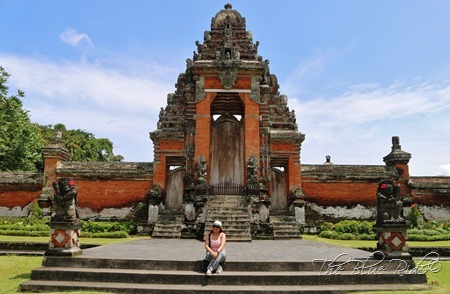
On to the next court, a small temple compound by the name or Pura Luhuring Purnama can be seen. The second and and third terraces are slightly higher than the first. o enter, visitor must go through a second date where a shelter called Bale Pengubengan greets them with ornamental features that depict the nine Hindu gods that guard the nine points of the compass, referred to as Dewata Nawa Sanga. East of this court is a small temple called Pura Dalem Bekak while in the western corner is an eight meter high wooden bell tower known to locals as “Bale Kulkul.” A climb up will reveal two hanging rectangular wooden bells, plus a high and spectacular view of the complex.

The fourth and last court is considered the most sacred, thus ranks the highest. It is referred to as the Utama Mandala. The intricately ornate central gate is open only during ceremonies. Several tiers of different outlines and sizes rise up into the temple’s skyline.
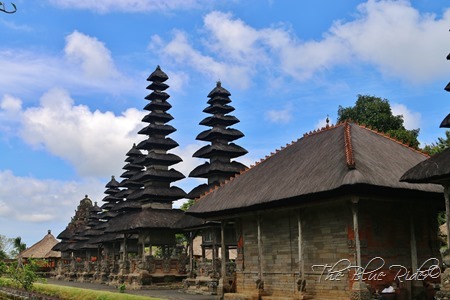
The name ‘Taman Ayun’ translates as ‘beautiful garden’. The vast encircling pools were once royal recreational places for the palace maids who would sail small canoes. Now the pools and ponds are fenced and visitors are denied entrance. This temple is a great place to marvel at the early and traditional Balines architectural features that prevail on the island.
Moving way up to the top, we dropped by for a cup of coffee. A cup of Must do, when in Bali. There are several seating areas where different flavours of tea and coffee are offered. For only 50,000 IDR you can get your own cup of Luwak Coffee which is made of mongoose digesting the plant seeds. The shop after the tour is filled with different drinks as well as herbs and spices and all at very good prices.
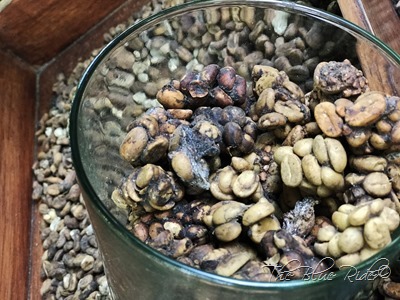
This is one of my favorite experiences in Bali as well because the guide showed us around the while explaining how the coffee is being made. 
This man is roasting the beans before it gets grinded.

Teas and coffee for tasting 
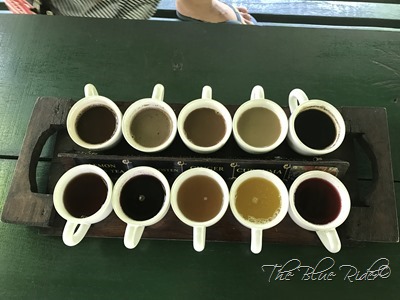

A smile while I have my very own cup of Luwak Coffee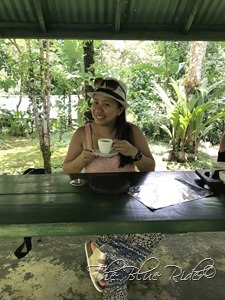
Our guide Sri and the cousin of the owner of this coffee resto plantation (I forgot her name)
Some coffee, herbs and spices, and teas for sale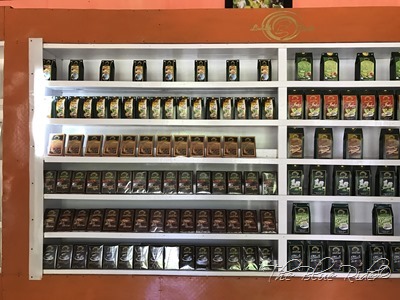
After tasting the famed Coffee Luwak of Bali, we then proceed to Pura Ulun Danu Beratan. This temple or Pura is both a famous picturesque landmark and a significant temple complex located on the western side of the Beratan Lake in Bedugul. Bedugul is known for it’s cool atmosphere.
Ulun Danu Beratan, literally ‘the source temple of Lake Beratan’, is easily the island’s most iconic sanctuary sharing the scenic qualities of seaside temples of Uluwatu and Tanah Lot.

The smooth reflective surface of the lake surrounding most of the temple’s base creates a unique floating impression, while the mountain range of Bedugul region encircling the lake provides the temple with a scenic backdrop. Just a perfect spot for photo enthusiasts.

The temple was built in the 17th century in worship of the main Hindu trinity, Brahma-Vishnu-Shiva, as well as the lake goddess – Dewi Danu. The sight and cool atmosphere of the Bali uplands have made the lake and this temple a favorite sighseeing and recreational spot as well as a frequently photographed site.
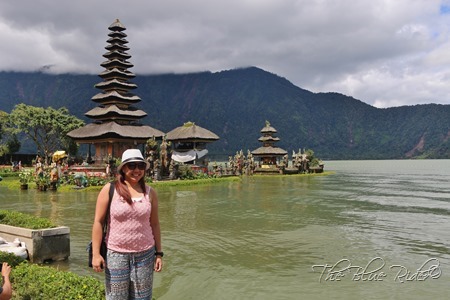
Once a UNESCO Cultural Heritage Site candidate, Jatiluwih Rice Terraces comprises over 600 hectares of rice fields that follow the flowing hillside topography of the Batukaru Mountain. It is a famous attraction in the western part of Bali due to its dramatic and truly exotic landscape.

These rice fields are well maintained using a traditional water management know as ‘subak’, which dates back to the 9th century.

We have lots of rice paddies here as well in the Philippines but this one is also a sight not to miss when in Bali.

After Jatiluwih Rice terraces we continued to climb a little uphill – to Batukaru Temple. It is called Pura Luhur Batukaru by the locals. One of the key temples located at the foot of namesake Mount Batukaru. It has an altitude of 2,270 MASL, thus making the temple pretty cool and densely forested upon entry.

Spotted a local paying respect and praying inside the temple. Guest who are visiting this place are required to wear a sarong and a sash just like the one I’m wearing below. It’s a sign of respect to the culture and religious practices of the locals. 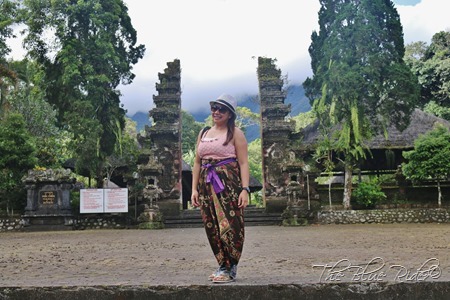
The main structure of Batukaru Temple features a multitude of shrines with tiered roofs, and complex is filled with ancient structures.
The walled compounds contain several shrines, as well as high 'meru' towers, and 'bale' pavilions with unmistakably ancient Balinese features, such as the dark grass roofs and intricate wall carvings. There are different courtyards inside the complex, sparsely positioned and on different elevations, connected through a series of flowering gardens and statue-lined steps.

Within the main temple courtyard there is a freshwater spring that serves as the holy water source for prayers and ceremonies. Another separate spring serves cleansing and purification rituals.

Munt Batukaru as a whole is considered a sacred site and the misty slopes of the heavily forested mountain enhances its spiritual vibe. The temple complex is frequented by visitors on any given day; however several parts of the temple’s inner sanctum remain off-limits to non-pilgrims. The temple is devoted to the Hindu god Mahadeva, considered the master of the air, water and plants. The 11th century Batukaru Temple shares the cool and quiet upland vicinity of the Wongaya Gede farming community in the Penebel Village of Tabanan regency. The best time to visit is during the temple’s biannual ‘piodalan’ temple anniversaries, which coincides each Thursday after the Galungan celebrations. Balinese families from adjacent villages in Wangaya Gede and from all over the island make pilgrimages to this mountain temple for blessings.
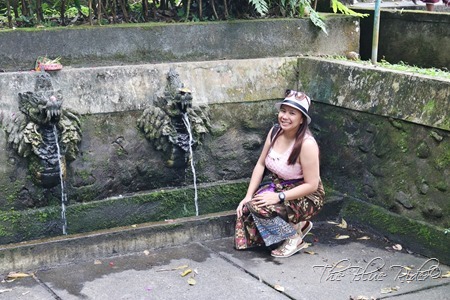
Moving on to the last and final stop of the day - Tanah Lot Temple. It is one of Bali’s most important landmarks. Everytime you hear Bali, what comes to mind is always beach, temples and beautiful sunset. So far, I have experienced the three within 2 days. Of course, Tanah shouldn’t be a missed when you are in Bali.

Although you are not allowed to enter the temple grounds just like most of the temples I’ve been to, the panoramic views and cultural offerings is enough to enjoy the place. The crashing wave and the beautiful colors of the sunset is always a sight to behold. 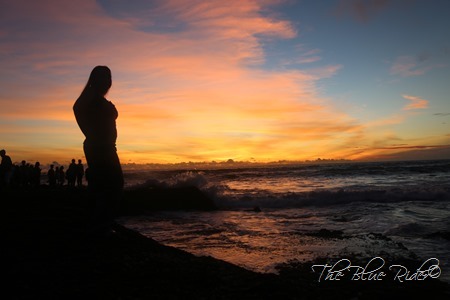
Capping the day with another round of Mie Goreng. Goodnight, Beautiful Island of Bali. Last two days has been awesome!

![IMG_1671[1] IMG_1671[1]](https://lh3.googleusercontent.com/-cGb_lxytIKk/WLTjH0y8hXI/AAAAAAAAIcQ/YJ2r3ihRz9s/IMG_1671%25255B1%25255D_thumb.jpg?imgmax=800)
![IMG_1674[1] IMG_1674[1]](https://lh3.googleusercontent.com/-G8yETDQw7NE/WLTjKNl_YqI/AAAAAAAAIcc/o9c10-gP9xI/IMG_1674%25255B1%25255D_thumb.jpg?imgmax=800)
